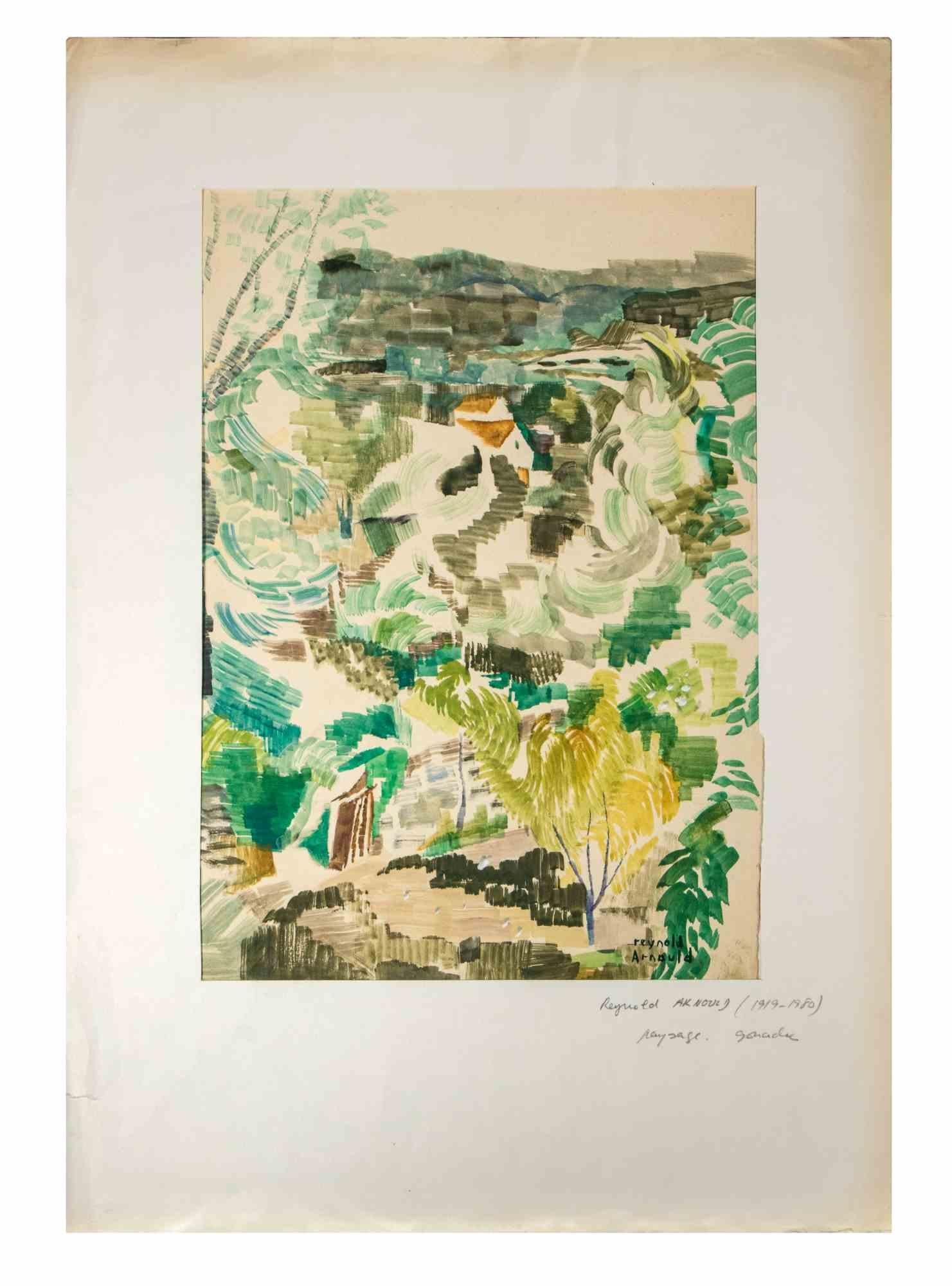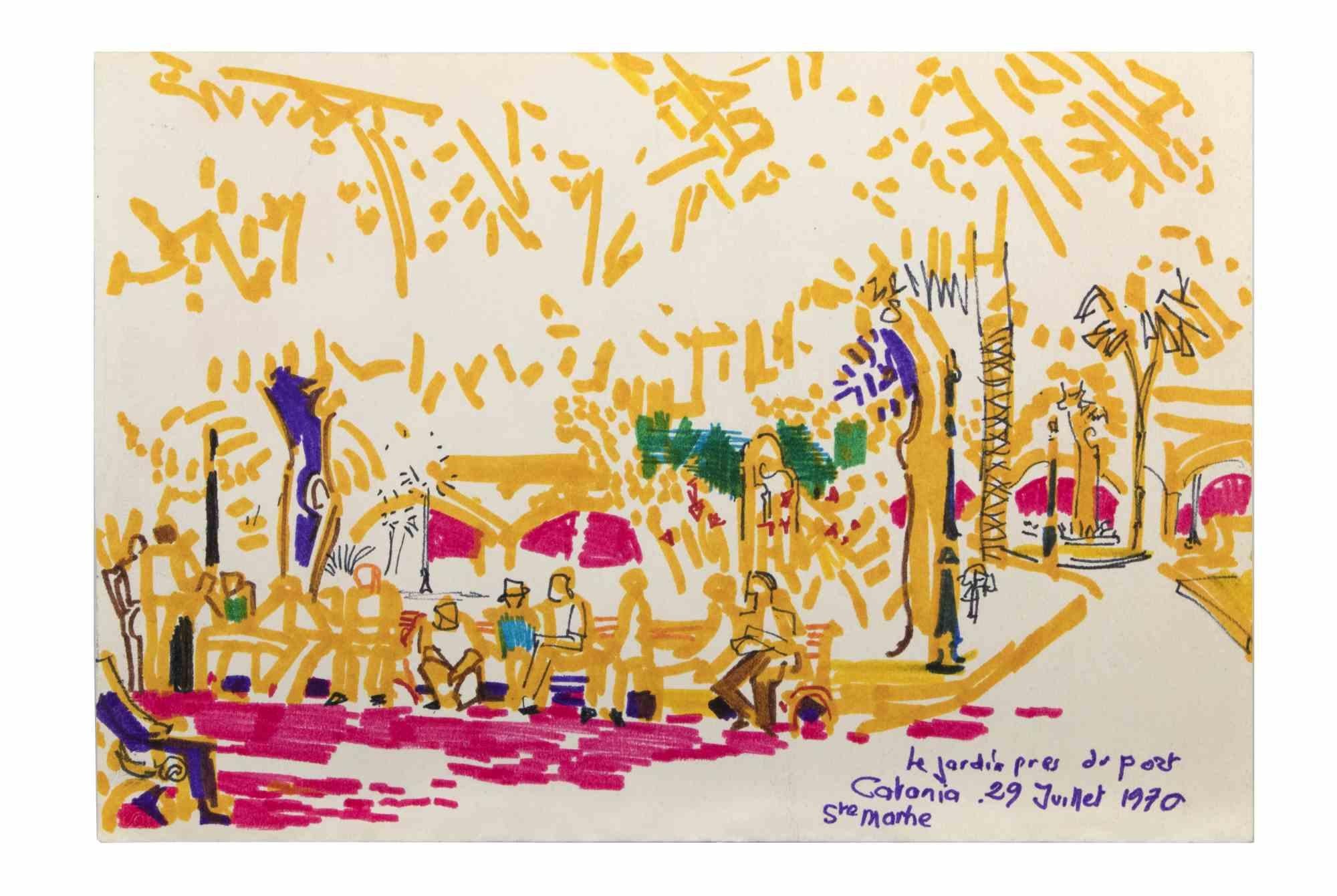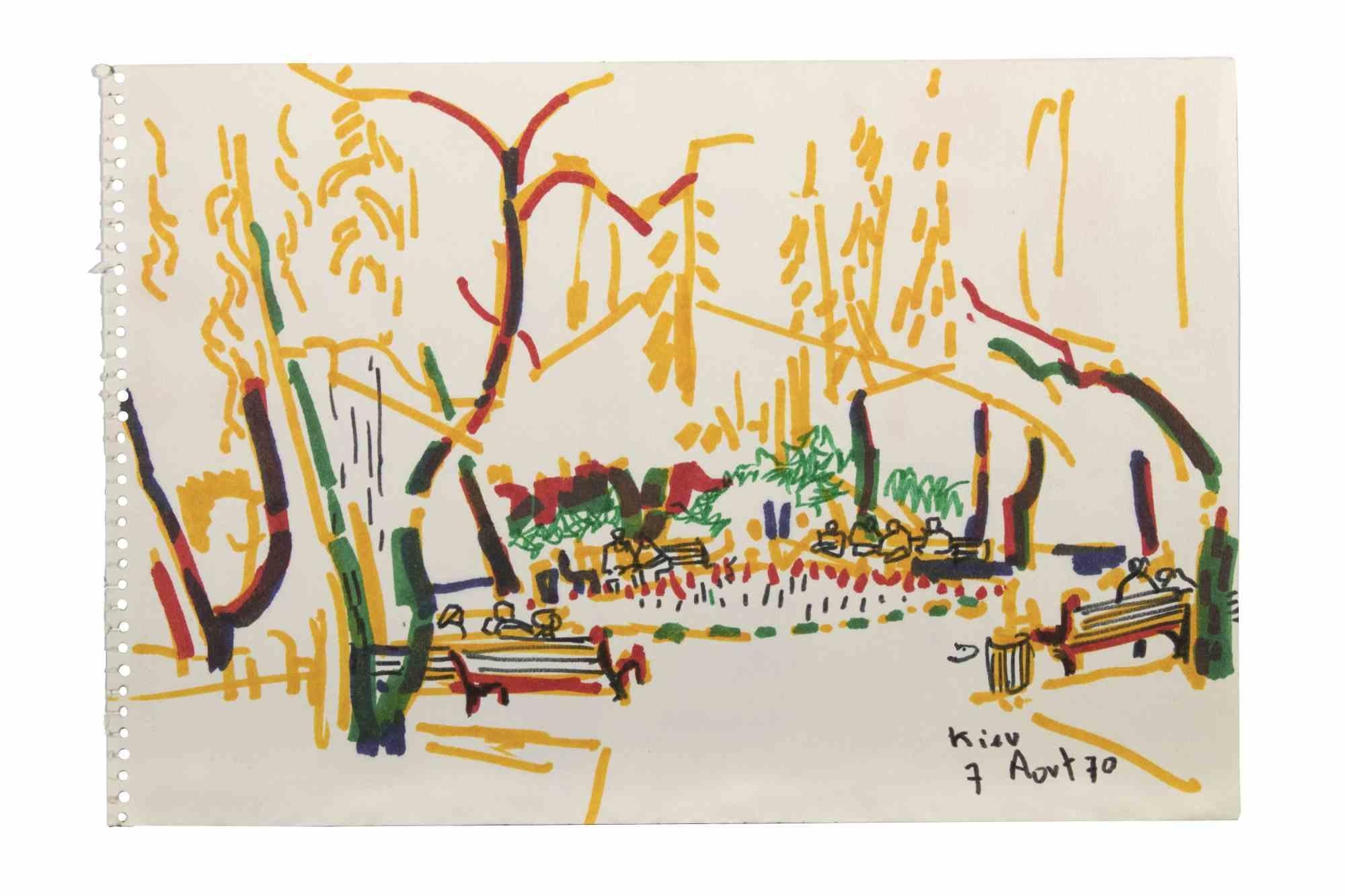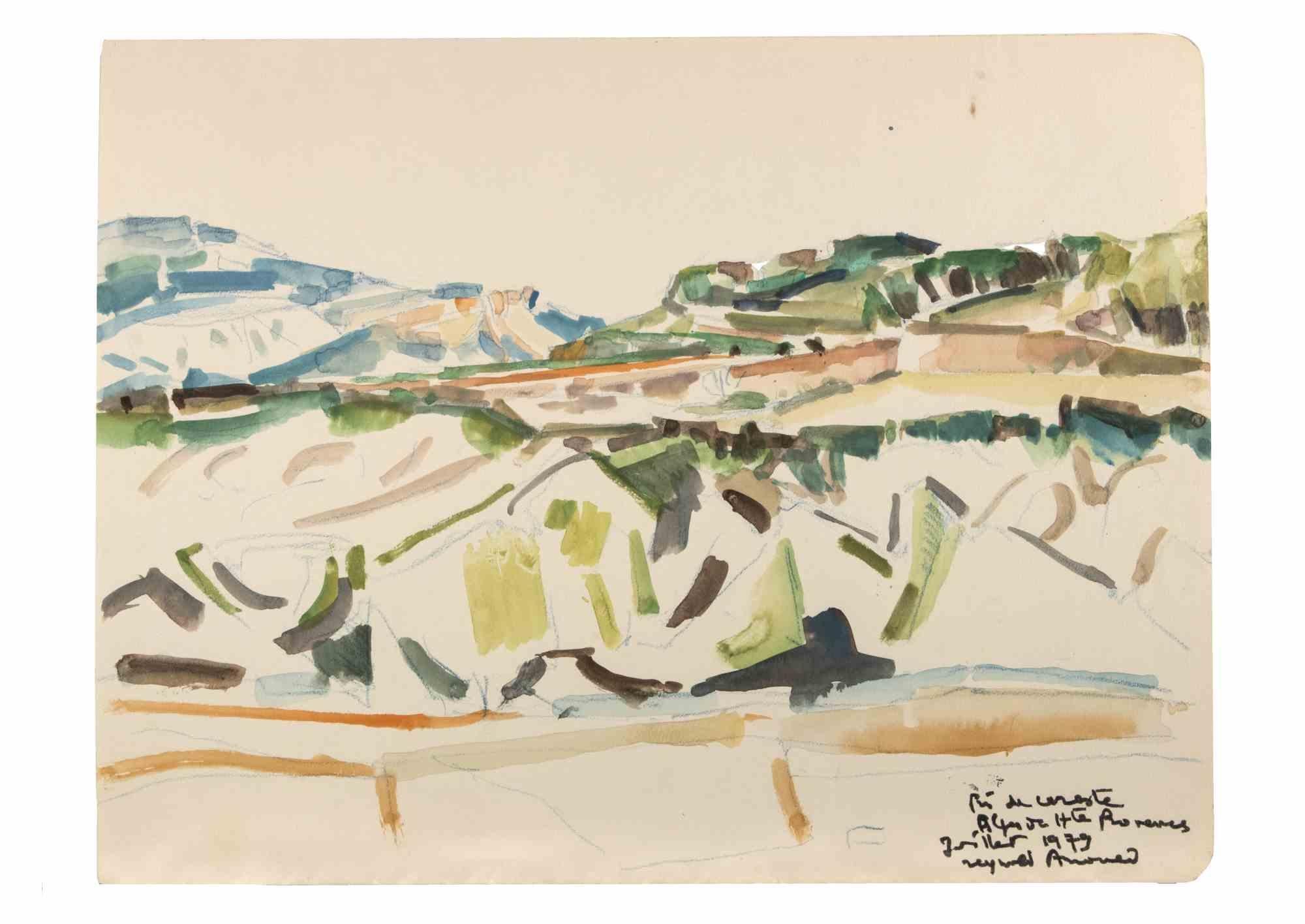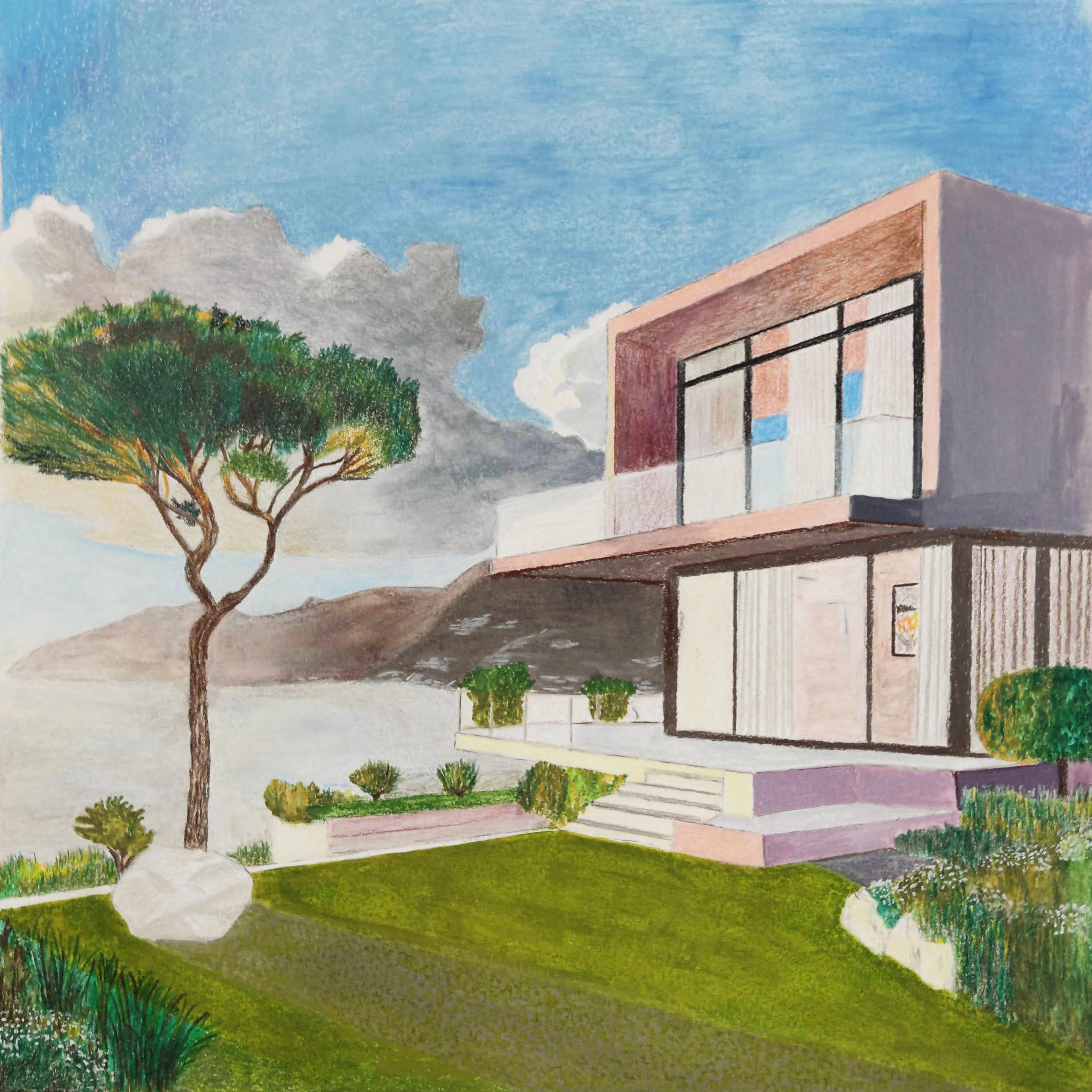Items Similar to Mid Century "Napa Valley Landscape" Watercolor Painting
Want more images or videos?
Request additional images or videos from the seller
1 of 8
Frederick PomeroyMid Century "Napa Valley Landscape" Watercolor Paintingc. 1960s
c. 1960s
About the Item
Frederick Pomeroy
"Napa Valley Landscape"
c. 1960s
Watercolor on paper
17"x14" brown wood frame float mount over linen mat
Signed in paint lower right
- Creator:Frederick Pomeroy (1924 - 2011, American)
- Creation Year:c. 1960s
- Dimensions:Height: 14 in (35.56 cm)Width: 17 in (43.18 cm)Depth: 0.5 in (1.27 cm)
- Medium:
- Movement & Style:
- Period:
- Condition:Very Good Condition - Minor wear consistent with age and history.
- Gallery Location:Arp, TX
- Reference Number:Seller: fpom1-11stDibs: LU1533212211062
About the Seller
5.0
Vetted Seller
These experienced sellers undergo a comprehensive evaluation by our team of in-house experts.
Established in 2015
1stDibs seller since 2021
70 sales on 1stDibs
Typical response time: 16 hours
Associations
Association of Women Art Dealers
- ShippingRetrieving quote...Ships From: Charleston, SC
- Return PolicyA return for this item may be initiated within 2 days of delivery.
Auctions on 1stDibs
Our timed auctions are an opportunity to bid on extraordinary design. We do not charge a Buyer's Premium and shipping is facilitated by 1stDibs and/or the seller. Plus, all auction purchases are covered by our comprehensive Buyer Protection. Learn More
More From This SellerView All
- 1964 San Francisco Construction Site Large Gouache and Pastel LandscapeBy Gloria DudfieldLocated in Arp, TXGloria Dudfield Tractor at Work 6-10-64 Gouache and Oil Pastel on Paper 36"x32 1/2" Unframed Signed and dated lower right in crayon Very Good Condition - Minor wear consistent with ...Category
1960s American Modern Mixed Media
MaterialsPaper, Oil Pastel, Gouache
- Abstract "Tree Landscape" Ink Line Drawing 1981 American Modernist Jack HooperBy Jack HooperLocated in Arp, TXJack Hooper "Tree Landscape" 1981 Ink on glossy paper 11"x7" unframed Signed and dated in pencil lower right Embrace the serene beauty of nature through this abstract line drawing b...Category
Mid-20th Century American Modern Abstract Drawings and Watercolors
MaterialsPaper, Ink
- 1964 Original Pastel Watercolor Drawing Construction Workers SF Red Green BlackBy Gloria DudfieldLocated in Arp, TXGloria Dudfield Construction Workers and Red Truck 6-16-64 Pastel and Watercolor 41 1/2" x 36" unframed Signed and dated in pastel lower right Gloria (Fischer) Dudfield July 12, 192...Category
Late 20th Century Modern Figurative Drawings and Watercolors
MaterialsPaper, Watercolor, Pastel
- 1960s "Mountain Side" Watercolor Landscape California Gold Country Mid CenturyLocated in Arp, TXThelma Corbin Moody AbEx Mountain Side c. 1960's Watercolor on Arches Paper 29.5" x 22", Unframed Thelma Corbin Moody (1908-1986) of Modesto, CA....Category
Late 20th Century American Realist Landscape Paintings
MaterialsWatercolor, Paper
- 1988 "Hawaii II" Abstract Landscape DrawingBy Elaine Kaufman FeinerLocated in Arp, TXElaine Kaufman Feiner (1922-2018) "Hawaii II" 1993 Oil pastel, paint on paper 30"x40" unframed Signed and dated in pencil lower right, signed, titled and dated on reverseCategory
1980s Abstract Abstract Drawings and Watercolors
MaterialsPaper, Oil Pastel, Paint
- 1964 "Tree with Blue" Pastel Impressionist Landscape Drawing NYC Female ArtistBy Edith Isaac-RoseLocated in Arp, TXEdith Isaac-Rose "Pastel Landscape Tree with Blue" 1964 Pastel on paper 11"x14" framed gold gallery frame 21.25"x1"x24" Signed and dated lower right in pencil. Came from a portfolio of her work. Born in Chicago in 1929, and neé Ganansky-Teitelbaum, she graduated from The Art Institute of Chicago in 1951 and moved to New York in 1959 where she lived ever since. Taking as her professional name her parents’ first names, Edith was a prolific artist working first as an abstract expressionist then turning in the 1980s to figurative, political work consisting of drawings, paintings, and embroideries which she called “Daily Rage”. She had been represented by the Phyllis Kind...Category
Mid-20th Century American Impressionist Landscape Drawings and Watercolors
MaterialsPaper, Oil Pastel
You May Also Like
- Second Mesa (Hopi Pueblo, Arizona), Multicolored Southwest Mixed Media LandscapeLocated in Denver, CO'Second Mesa (Hopi Pueblo, Arizona)' is a watercolor, ink, and charcoal on paper by Bert Van Bork (1928-2014). Signed by the artist in the lower right co...Category
1980s American Modern Landscape Drawings and Watercolors
MaterialsCharcoal, Archival Ink, Watercolor, Archival Paper
- Modernist Trees, 1940s Framed Modernist Landscape Watercolor Painting, Red GreenBy Richard SorbyLocated in Denver, COModernist painting of trees, interior forest scene by Colorado artist, Richard Sorby (1911-2001). Painted in dark colors of green, blue and black with brown, orange and white. Water...Category
1940s American Modern Landscape Drawings and Watercolors
MaterialsWatercolor, Archival Paper
- Green Landscape, Watercolor and Ink on Paper, circa 1926By Leon KellyLocated in Doylestown, PA"Green Landscape" by Philadelphia born modernist and surrealist painter Leon Kelly, is a framed and matted landscape painting. The 17.5" x 23.5" watercolor and ink on paper is signed...Category
1920s American Modern Landscape Drawings and Watercolors
MaterialsArchival Ink, Watercolor, Archival Paper
- Modernist Abstract Expressionist Watercolor Painting Bauhaus Weimar Pawel KontnyBy Pawel KontnyLocated in Surfside, FLAbstract watercolor composition bearing the influence of the earlier color-block compositions of Paul Klee. Pawel August Kontny, (Polish-German-American artist) He was born in Laurahuette, Poland, in 1923, the son of a wealthy pastry shop owner. In 1939 he began studying architecture in Breslau where he was introduced to the European masters and to the work of some of the German Expressionists, soon afterward banned as "degenerate artists" and removed from museums throughout Germany by the Nazi regime. His studies were interrupted by World War II. Drafted into the German army, traveling in many countries as a soldier, he sketched various landscapes but in 1945, he was captured and held as a prisoner of war in Italy. After the war, he studied at the Union of Nuremberg Architects to help design buildings to replace ones destroyed in the war. He recorded his impressions of the local population and the landscapes through his watercolors and drawings. Pawel Kontny thereafter moved to Nuremberg, Germany, becoming a member of the Union of Nuremberg Architects and helping to rebuild the city's historic center. He soon decided to concentrate on his professional art career. He married Irmgard Laurer, a dancer with the Nuremberg Opera. Pavel Kontny 's career as an artist was launched with his participation in an all German exhibition, held at the Dusseldorf Museum in 1952. He held one-man shows in Germany, Switzerland and the United States. During his trip to the United States in 1960, Kontny became instantly enamored with Colorado, and decided to relocate to Cherry Hills with his wife and two children. He quickly established himself in the local art community, being affiliated for a time with Denver Art Galleries and Saks Galleries. His subject matter became the Southwest. During this time he received the Prestigious Gold Medal of the Art Academy of Rome. His extensive travel provided material for the paintings he did using his hallmark marble dust technique. he also worked equally in pastel, watercolor, charcoal and pencil-and-ink. in a style which merged abstraction and realist styles, influenced by Abstract Expressionist painting and South Western American landscapes. This one bears the influence of Sam Francis. In the early 1960s he was one of only a few European-born professional artists in the state, a select group that included Herbert Bayer (1900-1985), a member of the prewar Bauhaus in Weimar and Dessau, Germany, and Roland Detre (1903-2001), a Hungarian modernist painter. As a Denver, Colorado resident, Pavel Kontny exhibited at galleries and museums throughout the United States, Germany and Japan. There, he was inspired by frequent trips to Native American pueblos in the Southwest, as well as by the study of the Plains Indians of Montana and Wyoming. Over the years Kontny had a number of students and generously helped young artist by hosting exhibitions at his Cherry Hills home. For many years he generously donated his paintings to support charitable causes in Denver. Influences during his European years included German pastelist C.O. Muller, German Informel painter Karl Dahmen and Swiss artist, Hans Erni. In the early 1950s his painting style showed the influence of the Die Brücke (The Bridge), a group of German expressionist artists formed in Dresden in 1905 who had a major impact on the evolution of modern art in the twentieth century in Germany. By the middle of the decade his style incorporated more referential abstraction and total abstraction, resulting in part from his study of Hans Hartung, a German artist based in Paris who exhibited his gestural abstract work in Germany. The American moon landing in 1969 inspired Paul Kontny...Category
20th Century American Modern Abstract Drawings and Watercolors
MaterialsWatercolor, Archival Paper
- Modernist Abstract Expressionist Watercolor Painting Bauhaus Weimar Pawel KontnyBy Pawel KontnyLocated in Surfside, FLAbstract watercolor composition bearing the influence of the earlier color-block compositions of Paul Klee. Pawel August Kontny, (Polish-German-American artist) He was born in Laurahuette, Poland, in 1923, the son of a wealthy pastry shop owner. In 1939 he began studying architecture in Breslau where he was introduced to the European masters and to the work of some of the German Expressionists, soon afterward banned as "degenerate artists" and removed from museums throughout Germany by the Nazi regime. His studies were interrupted by World War II. Drafted into the German army, traveling in many countries as a soldier, he sketched various landscapes but in 1945, he was captured and held as a prisoner of war in Italy. After the war, he studied at the Union of Nuremberg Architects to help design buildings to replace ones destroyed in the war. He recorded his impressions of the local population and the landscapes through his watercolors and drawings. Pawel Kontny thereafter moved to Nuremberg, Germany, becoming a member of the Union of Nuremberg Architects and helping to rebuild the city's historic center. He soon decided to concentrate on his professional art career. He married Irmgard Laurer, a dancer with the Nuremberg Opera. Pavel Kontny 's career as an artist was launched with his participation in an all German exhibition, held at the Dusseldorf Museum in 1952. He held one-man shows in Germany, Switzerland and the United States. During his trip to the United States in 1960, Kontny became instantly enamored with Colorado, and decided to relocate to Cherry Hills with his wife and two children. He quickly established himself in the local art community, being affiliated for a time with Denver Art Galleries and Saks Galleries. His subject matter became the Southwest. During this time he received the Prestigious Gold Medal of the Art Academy of Rome. His extensive travel provided material for the paintings he did using his hallmark marble dust technique. he also worked equally in pastel, watercolor, charcoal and pencil-and-ink. in a style which merged abstraction and realist styles, influenced by Abstract Expressionist painting and South Western American landscapes. This one bears the influence of Sam Francis. In the early 1960s he was one of only a few European-born professional artists in the state, a select group that included Herbert Bayer (1900-1985), a member of the prewar Bauhaus in Weimar and Dessau, Germany, and Roland Detre (1903-2001), a Hungarian modernist painter. As a Denver, Colorado resident, Pavel Kontny exhibited at galleries and museums throughout the United States, Germany and Japan. There, he was inspired by frequent trips to Native American pueblos in the Southwest, as well as by the study of the Plains Indians of Montana and Wyoming. Over the years Kontny had a number of students and generously helped young artist by hosting exhibitions at his Cherry Hills home. For many years he generously donated his paintings to support charitable causes in Denver. Influences during his European years included German pastelist C.O. Muller, German Informel painter Karl Dahmen and Swiss artist, Hans Erni. In the early 1950s his painting style showed the influence of the Die Brücke (The Bridge), a group of German expressionist artists formed in Dresden in 1905 who had a major impact on the evolution of modern art in the twentieth century in Germany. By the middle of the decade his style incorporated more referential abstraction and total abstraction, resulting in part from his study of Hans Hartung, a German artist based in Paris who exhibited his gestural abstract work in Germany. The American moon landing in 1969 inspired Paul Kontny...Category
20th Century American Modern Abstract Drawings and Watercolors
MaterialsWatercolor, Archival Paper
- Modernist Abstract Expressionist Watercolor Painting Bauhaus Weimar Pawel KontnyBy Pawel KontnyLocated in Surfside, FLAbstract watercolor composition bearing the influence of the earlier color-block compositions of Paul Klee. Pawel August Kontny, (Polish-German-American artist) He was born in Laurahuette, Poland, in 1923, the son of a wealthy pastry shop owner. In 1939 he began studying architecture in Breslau where he was introduced to the European masters and to the work of some of the German Expressionists, soon afterward banned as "degenerate artists" and removed from museums throughout Germany by the Nazi regime. His studies were interrupted by World War II. Drafted into the German army, traveling in many countries as a soldier, he sketched various landscapes but in 1945, he was captured and held as a prisoner of war in Italy. After the war, he studied at the Union of Nuremberg Architects to help design buildings to replace ones destroyed in the war. He recorded his impressions of the local population and the landscapes through his watercolors and drawings. Pawel Kontny thereafter moved to Nuremberg, Germany, becoming a member of the Union of Nuremberg Architects and helping to rebuild the city's historic center. He soon decided to concentrate on his professional art career. He married Irmgard Laurer, a dancer with the Nuremberg Opera. Pavel Kontny 's career as an artist was launched with his participation in an all German exhibition, held at the Dusseldorf Museum in 1952. He held one-man shows in Germany, Switzerland and the United States. During his trip to the United States in 1960, Kontny became instantly enamored with Colorado, and decided to relocate to Cherry Hills with his wife and two children. He quickly established himself in the local art community, being affiliated for a time with Denver Art Galleries and Saks Galleries. His subject matter became the Southwest. During this time he received the Prestigious Gold Medal of the Art Academy of Rome. His extensive travel provided material for the paintings he did using his hallmark marble dust technique. he also worked equally in pastel, watercolor, charcoal and pencil-and-ink. in a style which merged abstraction and realist styles, influenced by Abstract Expressionist painting and South Western American landscapes. This one bears the influence of Sam Francis. In the early 1960s he was one of only a few European-born professional artists in the state, a select group that included Herbert Bayer (1900-1985), a member of the prewar Bauhaus in Weimar and Dessau, Germany, and Roland Detre (1903-2001), a Hungarian modernist painter. As a Denver, Colorado resident, Pavel Kontny exhibited at galleries and museums throughout the United States, Germany and Japan. There, he was inspired by frequent trips to Native American pueblos in the Southwest, as well as by the study of the Plains Indians of Montana and Wyoming. Over the years Kontny had a number of students and generously helped young artist by hosting exhibitions at his Cherry Hills home. For many years he generously donated his paintings to support charitable causes in Denver. Influences during his European years included German pastelist C.O. Muller, German Informel painter Karl Dahmen and Swiss artist, Hans Erni. In the early 1950s his painting style showed the influence of the Die Brücke (The Bridge), a group of German expressionist artists formed in Dresden in 1905 who had a major impact on the evolution of modern art in the twentieth century in Germany. By the middle of the decade his style incorporated more referential abstraction and total abstraction, resulting in part from his study of Hans Hartung, a German artist based in Paris who exhibited his gestural abstract work in Germany. The American moon landing in 1969 inspired Paul Kontny...Category
20th Century American Modern Abstract Drawings and Watercolors
MaterialsWatercolor, Archival Paper
